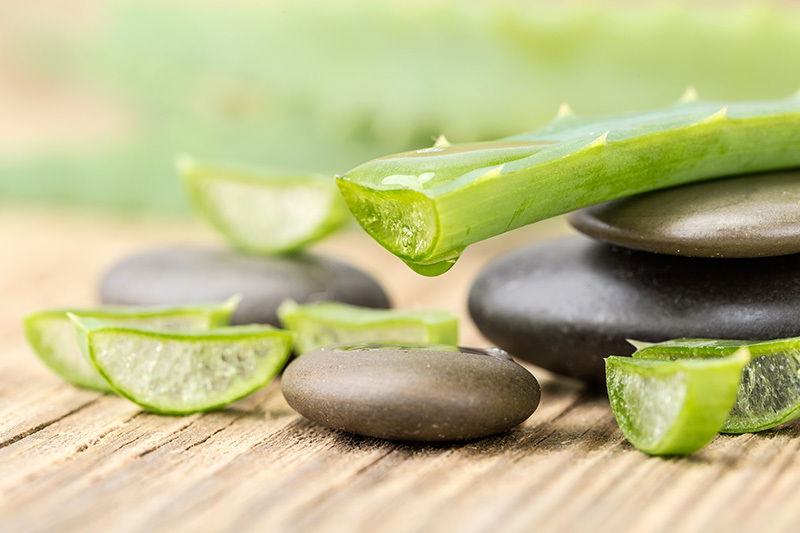Delve Into the Mysteries of Tulips With These 7 Amazing Facts
Posted on 13/08/2025
Delve Into the Mysteries of Tulips With These 7 Amazing Facts
Tulips, with their vibrant colors and elegant shape, have enchanted gardeners, artists, and flower lovers for centuries. But behind their beauty lies a tapestry of history, culture, science, and mystery. If you think you know all there is to know about these iconic blooms, think again! In this comprehensive guide, we'll delve into the mysteries of tulips and uncover seven amazing facts that make these flowers truly extraordinary.

Table of Contents
- The Exotic Origins of Tulips
- Tulip Mania: History's First Economic Bubble
- Colorful Secrets: Tulip Colors and Meanings
- Astonishing Diversity: Thousands of Tulip Varieties
- Unusual Travelers: Tulips Spread Around the World
- Tulips: More Than Meets the Eye - The Toxic Truth
- Tulips in Space: A Bloom Beyond Earth
1. The Exotic Origins of Tulips
Did you know that tulips did not originate in the Netherlands? Despite the common association, the story of tulips begins much further east in the wild, mountainous landscapes of Central Asia. Native to regions in what is now Kazakhstan, Uzbekistan, and parts of China, tulips originally grew in the rugged steppes, blooming in spring after harsh winters.
The name "tulip" comes from the Persian word "dulband", meaning turban, likely referring to the flower's resemblance to the traditional Middle Eastern headdress. The flower's journey from wild Asian hillsides to European gardens is a mystery intertwined with the Silk Road, where traders and travelers brought bulbs to the Ottoman Empire. It was in Istanbul that these blooms first captivated the aristocracy, becoming a symbol of wealth and luxury in Ottoman society.
Key origins of tulips include:
- Central Asian steppes and mountains
- Wild varieties adapted to cold, dry climates
- Cultural significance in Persia and the Ottoman Empire
Before long, tulips became coveted symbols of status, eventually making their way to Western Europe where they found their modern fame--especially in the Netherlands.
2. Tulip Mania: History's First Economic Bubble
If you've heard of tulips, you're likely familiar with the phrase "Tulip Mania". But did you know this floral frenzy was arguably the world's first recorded economic bubble? In the early 17th century, tulip bulbs became so desirable in the Netherlands that their prices soared to astonishing heights.
By 1637, some rare tulip bulbs were sold for more than ten times the annual income of a skilled worker! The speculation reached such extremes that people traded houses and valuable goods just for a single bulb. When the craze ended, many were left financially ruined, leading historians to draw parallels between tulip speculation and modern financial bubbles.
Why did tulips incite such wild passion and price inflation? Several factors contributed:
- Novelty: Tulips were a new, exotic flower in Europe.
- Desirability: Unusual patterns and colors, particularly "broken" tulips with variegated flames of color.
- Limited supply: Tulip bulbs could only be harvested seasonally, further driving up demand.
The tulip mania remains a symbol of economic excess and the unpredictable nature of markets, reinforcing the flower's reputation as more than just a garden beauty.
3. Colorful Secrets: Tulip Colors and Meanings
One of the most mysterious features of tulips is their breathtaking range of colors. These blooms don't just come in red and yellow! In fact, tulips are found in nearly every hue, except true blue.
But did you know that the original "broken" color patterns that so fascinated 17th-century collectors were the result of viral infections? A particular virus, now called the Tulip Breaking Virus, caused spectacular feathered and flamed color patterns on the petals. While beautiful, these viral infections also weakened the plants, making them extremely rare - and therefore, enormously valuable.
Each tulip color has a unique meaning in the language of flowers:
- Red Tulips: True love and passion
- Yellow Tulips: Cheerfulness and sunshine
- White Tulips: Purity, forgiveness, and honor
- Purple Tulips: Royalty and admiration
- Pink Tulips: Affection and good wishes
- Black ("Queen of Night") Tulips: Mystery and sophistication
- Orange Tulips: Warmth, happiness, and energy
Fun Fact: While the quest for a true blue tulip continues, some modern varieties come tantalizingly close, displaying shades of violet and indigo.
4. Astonishing Diversity: Thousands of Tulip Varieties
Tulips are not just a single flower, but rather a stunningly diverse family that fascinates botanists and gardeners alike. There are over 3,000 registered tulip varieties today, categorized into 15 official groups based on shape, origin, and bloom time. Each group unveils new mysteries--from petite wild species to extravagant, fringed hybrids.
Some notable tulip groups include:
- Single Early Tulips: Compact blooms that open with the first spring warmth.
- Double Tulips: Multi-petaled, peony-like flowers for dramatic effect.
- Parrot Tulips: Wild, ruffled petals resembling the plumage of exotic birds.
- Viridiflora Tulips: Characterized by green streaks in their petals.
- Rembrandt Tulips: Named after the artist, these mimic the streaked patterns of viral "broken" tulips.
Darwin Hybrid Tulips deserve special mention for their large, sturdy flowers, and their ability to perennialize reliably in home gardens.
No matter your garden's style, there is sure to be a tulip variety to complement it, which explains their continued popularity and the enduring mystery of tulips.
5. Unusual Travelers: Tulips Spread Around the World
Tulips are globe-trotters, and their journey from Central Asia to the rest of the world is nothing short of remarkable. After their rise to fame in the Ottoman Empire, tulips were introduced to Europe in the 16th century, thanks largely to Carolus Clusius, a botanist and director of the Leiden University botanical garden in the Netherlands. His private collection eventually became the origin of Dutch tulip cultivation.
Very quickly, the Dutch became the epicenter of tulip cultivation, a status reflected in the world-famous tulip fields of Holland today. However, tulips also made significant journeys to:
- Iran and Turkey: Featuring prominently in traditional carpet patterns and national festivals
- United Kingdom: A Victorian-era favorite in estate gardens
- North America: Brought by European settlers and later celebrated in tulip festivals from Ottawa to Washington State
- South Africa & Australia: Adapted to local climates and featured in their own spring garden festivals
From royal palaces to suburban yards, tulips have become symbols of renewal, beauty, and hope everywhere they bloom.
6. Tulips: More Than Meets the Eye - The Toxic Truth
While tulips captivate us with their colors and grace, there is a hidden side to their allure. Did you know that every part of the tulip plant is toxic to humans and pets? The chemicals responsible, called tulipalin A and B, can cause skin irritation, nausea, and even more severe symptoms if ingested in large quantities.
- Pets (especially cats and dogs) are at risk if they chew bulbs, so keep these well out of reach.
- Gardeners who handle large quantities of bulbs or leaves may develop "tulip fingers"--an itchy, red rash caused by direct contact.
- During the Dutch Hunger Winter of WWII, starving citizens boiled tulip bulbs as food, though they were bitter and sometimes caused illness.
Pro Tip: Always wear gloves when planting or handling tulip bulbs, and keep them away from curious kids and pets to avoid accidental poisoning.
7. Tulips in Space: A Bloom Beyond Earth
One of the most inspiring mysteries of tulips is their journey beyond our planet! In the 1980s and again in the 1990s, tulip bulbs were sent into space aboard the Space Shuttle and to the International Space Station for scientific experiments.
These experiments focused on how bulbs grow in microgravity, helping scientists understand plant adaptation to extraterrestrial environments--a crucial topic for future long-term space missions. The result?
- Space-grown tulips developed slightly differently, with altered root patterns and growth habits.
- These discoveries are now helping inform research on growing food in space.
So, even as we gaze at tulips in our gardens, we know there are bulbs that have bloomed among the stars--a true testament to the resilience and intrigue of this remarkable flower.

Conclusion: Tulips Remain a Floral Mystery
From their Central Asian wilderness origins to their position as Dutch icons and their journey to space, tulips encapsulate centuries of secrets and stories. Whether you're fascinated by their colorful symbolism, amazed by their economic history, or enchanted by their diversity, there's always something new to discover about these botanical wonders.
As you plant tulips or admire them in bloom, remember you're participating in a tradition that spans continents and centuries--one full of beauty, intrigue, and endless mystery.
If you've enjoyed this exploration, share this article and spread the wonder of tulips' amazing facts! Are there any mysterious tulip facts you love? Let us know below.
Latest Posts
Keep Flowers Forever: 3 Easy Methods for Long-Lasting Blooms
Dive into the Garden of Your Character
Unique Flower Arrangements for Birthday Joy
Delve Into the Mysteries of Tulips With These 7 Amazing Facts





